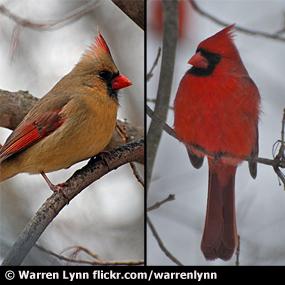For “Winged Wednesday:
Great Green Macaw


“The Great Green Macaw—second-largest macaw in the world after the Hyacinth Macaw—created quite a stir in Ecuador recently. A sighting of 36 birds flying over the lush forest of the Canandé Reserve marked the first time such a large flock was spotted here. The flock included more Great Green Macaws than were previously thought to exist in the country.
Canandé Reserve—established in 2000 by the Jocotoco Foundation and supported by ABC, World Land Trust-US, and other partners—was established in part to protect this macaw. Park guards have continued to track the birds to try to learn more about their seasonal movements. Ironically, it is suspected that timber harvesting adjacent to the reserve is causing these macaws to seek new habitat and thus, signals that more conservation action is needed.
Like its other parrot relatives, the Great Green Macaw is highly sociable. Sightings of groups of a dozen or more birds should be common, yet this majestic bird has become rare throughout its range due to poaching for the pet trade and feathers. Other threats include habitat destruction from logging, conversion of land for agriculture and cattle pasture, and hunting.”
Help ABC conserve this and other birds and their habitats!
Photo: Great Green Macaws, Wikipedia.org; Range Map by ABC
______
And our winged friends, the Bees:
TIME Magazine Envisions a World Without Honeybees

TIME Magazine's cover this week depicts a single bee, its wings flapping in frenzied motion on a stark black background. It forebodingly reads, "A WORLD WITHOUT BEES: THE PRICE WE'LL PAY IF WE DON'T FIGURE OUT WHAT'S KILLING THE HONEYBEE".
The article by Bryan Walsh addresses a disastrous phenomenon that could tumble the basis of our food system: the widespread collapse of honeybee colonies nationwide known as "colony collapse disorder." Honeybees across the nation have been dying at rates unseen in history. To say that the bees are dropping like flies, well, it's an affront to the necessity of bees in our food systems and economy. It's hard to talk about colony collapse disorder and not sound Doomsday-ish. And that's because, as Walsh reveals, one-third of the food on our tables is there because of honeybees, which pollinate a wide array of the foods we love and need, and their survival is required to fuel our both our bodies and our economy. Forget about berries, fruits, many vegetables if we fail to address this honeybee crisis.
He reports on the lethal effects on bees of a class of pesticides called neonicotinoids, or "neonics" for short.
Neonics are highly toxic to bees. Science shows that these pesticides could be the reason for the widespread die-off, and if these pesticides aren't killing the bees directly, they are likely causing them to lose their way back to the beehive, so they get lost and starve.” More at: http://earthjustice.org/blog/2013-august/time-magazine-envisions-a-world-without-honeybees
-------
You Can't Spell L-I-F-E Without Bee(s)
“As the narrator of the documentary, Vanishing of the Bees, Page and Maher spoke quietly and seriously about the fact that our bees are dying in mass quantities, and at an alarming rate. They're pesky stinging bugs, so why should we care? Well, here's why. We cannot live without bees.
Well, guess what? The bees are disappearing. In massive numbers. All around the world. And if you think I'm being alarmist and that, "Oh, they'll figure out some way to pollinate the plants..." No, they've tried. For a lot of what we eat, only bees work. And they're not working. They're gone. It's called Colony Collapse Disorder, when the hive's inhabitants suddenly disappear, and all that's left are a few queens and some immature workers.
A quote by Einstein to illustrate the importance of this bee issue: "If the bee disappeared off the surface of the globe, then man would have only four years of life left. No more bees, no more pollination, no more plants, no more animals, no more man."
But I think we're the ones suffering from Colony Collapse Disorder. Because although nobody really knows for sure what's killing the bees, it's not al-Qaeda, and it's not God doing some of his Old Testament shtick, and it's not Winnie the Pooh. It's us. It could be from pesticides, or genetically modified food, or global warming, or the high-fructose corn syrup we started to feed them. Recently it was discovered that bees won't fly near cell phones -- the electromagnetic signals they emit might screw up the bees navigation system, knocking them out of the sky. So thanks guy in line at Starbucks, you just killed us. It's nature's way of saying, "Can you hear me now?"
Last week I asked: If it solved global warming, would you give up the TV remote and go back to carting your fat ass over to the television set every time you wanted to change the channel. If that was the case in America, I think Americans would watch one channel forever. If it comes down to the cell phone vs. the bee, will we choose to literally blather ourselves to death?” More at: http://www.huffingtonpost.com/bill-maher/the-birds-the-bees-and-ea_b_46410.html
_______
Gardeners Beware: Bee-Toxic Pesticides Found in "Bee-Friendly" Plants Sold at Garden Centers Nationwide
“A new, first-of-its-kind pilot study by Friends of the Earth-US and Pesticide Research Institute has found 54 percent of common garden plants purchased at top retailers including Lowes and Home Depot contained neonicotinoid pesticides, which studies show can harm or kill bees and other pollinators, with no warning to consumers. The UK’s largest garden retailers, including Homebase, B&Q and Wickes, have already stopped selling neonics.” More at: http://www.foe.org/beeaction
_______
BirdNote: Woodpeckers, Kookaburras, Ravens ...
Upcoming Shows
Northern Flicker SUNDAY Woodpeckers As Keystone Species by Bob Sundstrom LISTEN NOW ►
Bobolink MONDAY Grassland Meander by Bob Sundstrom LISTEN NOW ►
Mallard TUESDAY Male Mallards Disappear by Frances Wood LISTEN NOW ►
Laughing Kookaburra WEDNESDAY Laughing Kookaburra by Bob Sundstrom LISTEN NOW ►
Northern Cardinal (Female/Male) THURSDAY Northern Cardinal - Meet the Cardinal by Bob Sundstrom LISTEN NOW ►
European Blackcap FRIDAY Evolution Of European Blackcaps featuring Mike Webster, Ph.D. Director, Macaulay Library LISTEN NOW ►
Common Raven SATURDAY How Raven Made the Tide by Frances Wood LISTEN
_______
On This Day:
The Swing Era begins with Benny Goodman's triumphant Palomar Ballroom performance, Aug 21, 1935:
“While the roots of swing music clearly lie in earlier forms of jazz—and particularly in African-American jazz performance styles—swing as we know it may just have been born at a specific time and in a specific place, with an electric performance by one particular Big Band for one particularly enthusiastic audience. The time and place was August 21, 1935, at the Palomar Ballroom in Los Angeles, California, where Benny Goodman and his band emphatically opened the Swing Era with an exuberant performance witnessed by thousands of young fans in the live audience and millions more tuning in to a live radio broadcast.
![images[5] images[5]](https://blogger.googleusercontent.com/img/b/R29vZ2xl/AVvXsEizDz6bob4fGE66pf9Enzz2BvyhNi0ecYfyA6Fw69hajsU1Znhg8lpNt7sox37rGbJq0HgAmGdcV7aaU8XdUdNQrWnAvaqSyS8Rp-GJilKbBvskFA7X66cNoojY8Vb9iT-a7YWNXr-51IBp/?imgmax=800)
By his early teens, Goodman had proven his father correct by becoming a working professional, and by 24, he was successful enough to land his band a regular gig on a weekly radio program broadcast out of New York City called Let's Dance. It was there that Goodman began performing "hot" arrangements by African-American bandleader Fletcher Henderson—arrangements that departed from the more romantic style of the day by employing loose, upbeat, syncopated rhythms that had been common in African-American jazz ensembles for years. Goodman's band would often appear well past midnight, New York time, on Let's Dance. And while this limited their exposure on the East Coast, Goodman would soon discover a huge new fan base when he took his group west to California.
Already familiar with Benny Goodman's exciting new style from his Friday night radio appearances, a huge crowd of young people turned out for his Palomar Ballroom debut on this day in 1935. It was a promising start to an engagement Goodman hoped would salvage a summer tour otherwise judged a failure. But Goodman stuck to relatively staid, stock 
Before their return from the first intermission, the band's drummer, Gene Krupa, is said to have urged Goodman, "If we're gonna die, Benny, let's die playing our own thing." It was at that point that Benny Goodman famously pulled out Henderson's arrangements along with all the stops on his talented orchestra, to the crowd's immense delight.”
_______
Hawaii becomes 50th state, Aug 21, 1959:
“The modern United States receives its crowning star when President Dwight D. Eisenhower signs a proclamation admitting Hawaii into the Union as the 50th state. The president also issued an order for an American flag featuring 50 stars arranged in staggered rows: five six-star rows and four five-star rows. The new flag became official July 4, 1960.
In 1893, a group of American expatriates and sugar planters supported by a division of U.S. Marines deposed Queen Liliuokalani, the last reigning monarch of Hawaii. One year later, the Republic of Hawaii was established as a U.S. protectorate with Hawaiian-born Sanford B. Dole as president. Many in Congress opposed the formal annexation of Hawaii, and it was not until 1898, following the use of the naval base at Pearl Harbor during the Spanish-American War, that Hawaii's strategic importance became evident and formal annexation was approved. Two years later, Hawaii was organized into a formal U.S. territory. During World War II, Hawaii became firmly ensconced in the American national identity following the surprise Japanese attack on Pearl Harbor in December 1941.

From me: Hawaii was the first state to ban plastic bags.
_______
Yesterday:
Ray had to take Shay to the doctor, and I didn’t hear from Jay, so I took off to the metal carport dealer in the next town. They have an Eagle carport dealer here in Willis, but when I spoke to them on the phone they didn’t seem as knowledgeable, or as interested in selling me one. The one in Conroe is run by a sweet lady who has a recently disabled husband, and they having a hard time, so I wanted to give her my business. And I wanted to take another look at the 34’ Avion travel trailer they have for sale.
After she made a call to the factory to check on some things, I placed my order and paid the down payment. My carport will have to be custom made, as it has to be narrower, and I am adding an extra 4’ to the legs. I do want to be able to keep the sun off my house, and also get my little motorhome in there, if needed.
I toured the Avion, this time looking in all the top and bottom cabinets, and around the toilet and tub, and didn’t find any weak spots. It is a lovely trailer, I just don’t really care for the floor plan. It has a rear bathroom, so it doesn’t have a real bedroom, unless you count sleeping in the hallway from the bathroom to the living room. That’s alright for a trip, but not for fulltime living. Also, the stove is on the left, the sink next to it, and the counter to the right of that. I prefer to have some counter space between the sink and the stove.
About 30 miles from here is a 38’ trailer with front kitchen which is on two walls so it has plenty of countertop, dinette and couch in the slide across from a patio door, and rear bedroom. Hopefully, I can go see it today.

























1 comment:
I got to see (and hear) the Guy Lumbardo orchestra but never got to see Benny Goodman.
Post a Comment